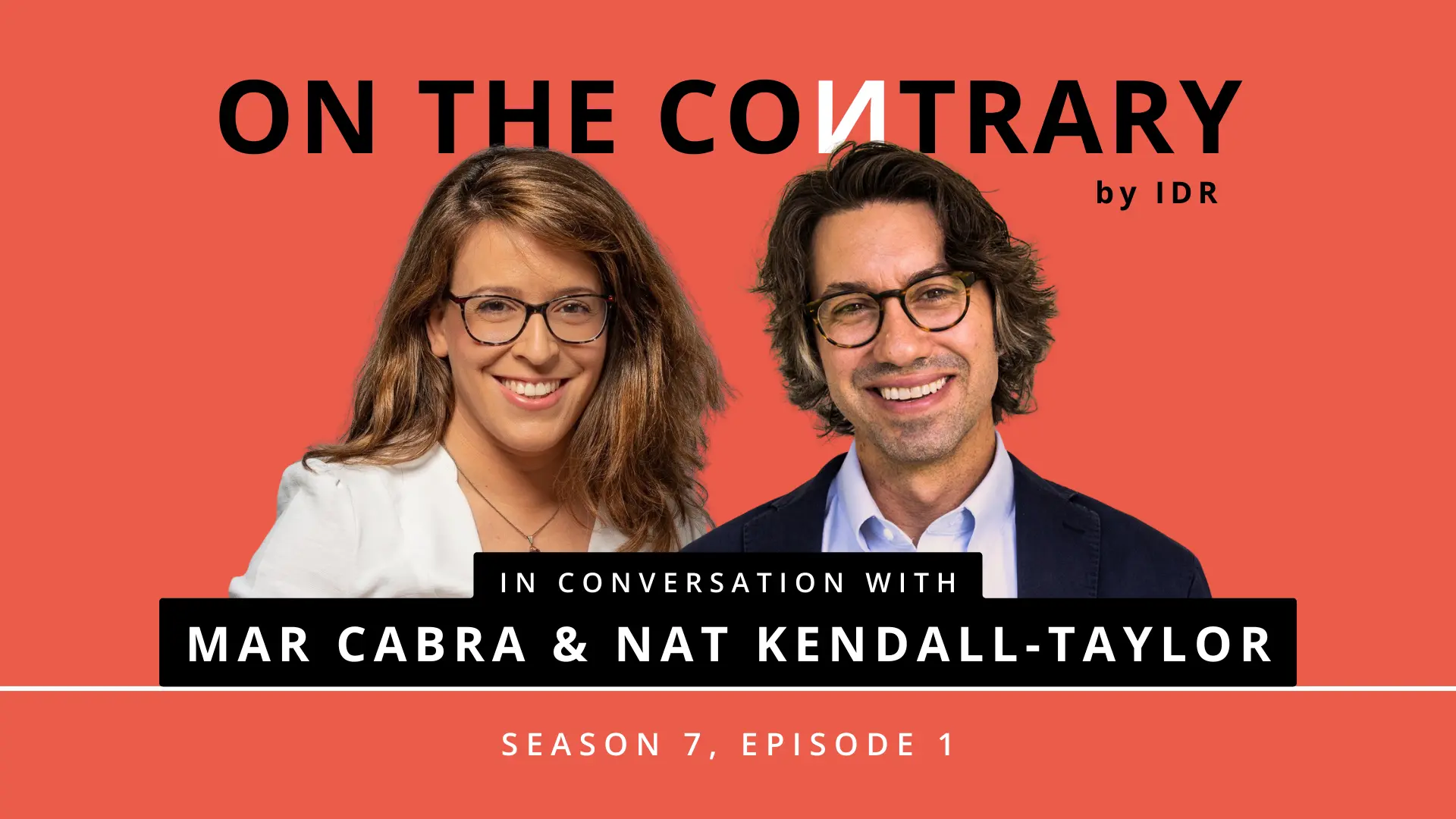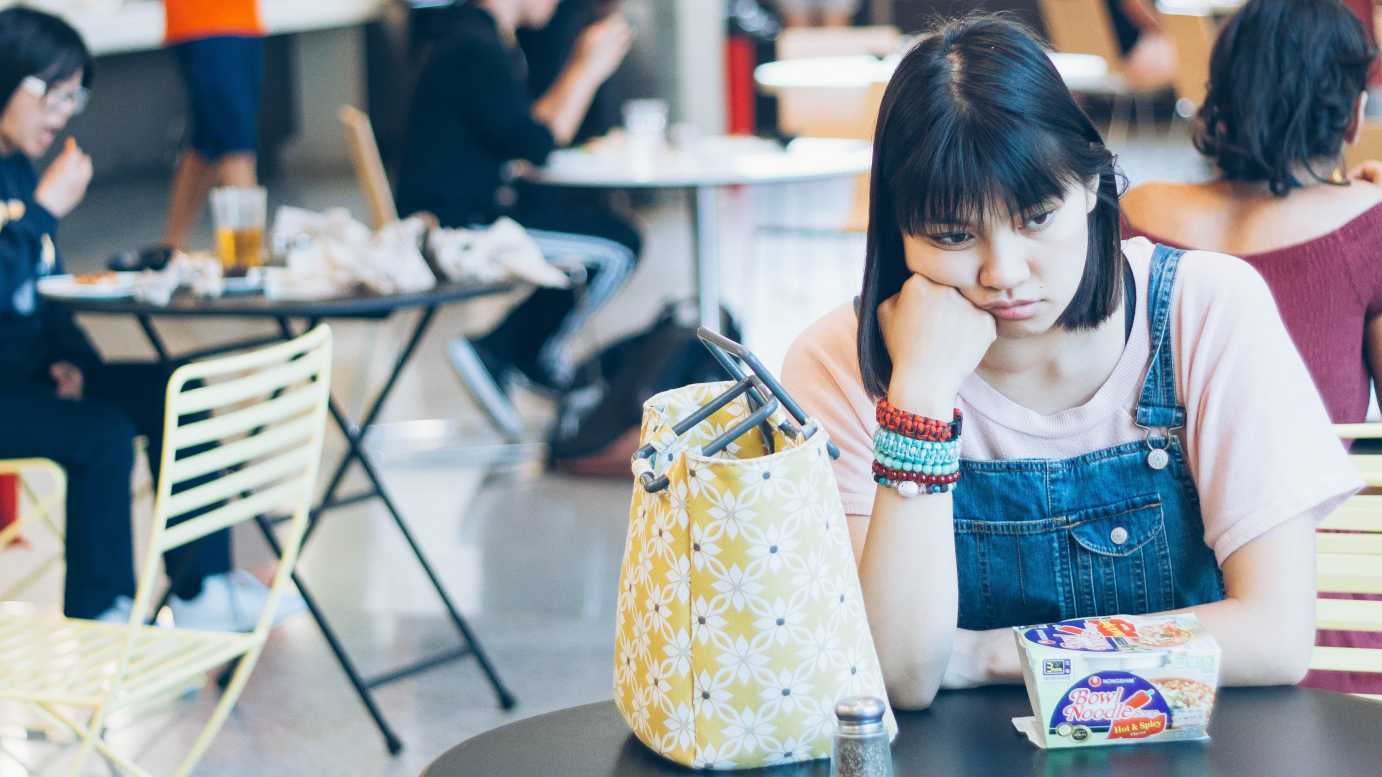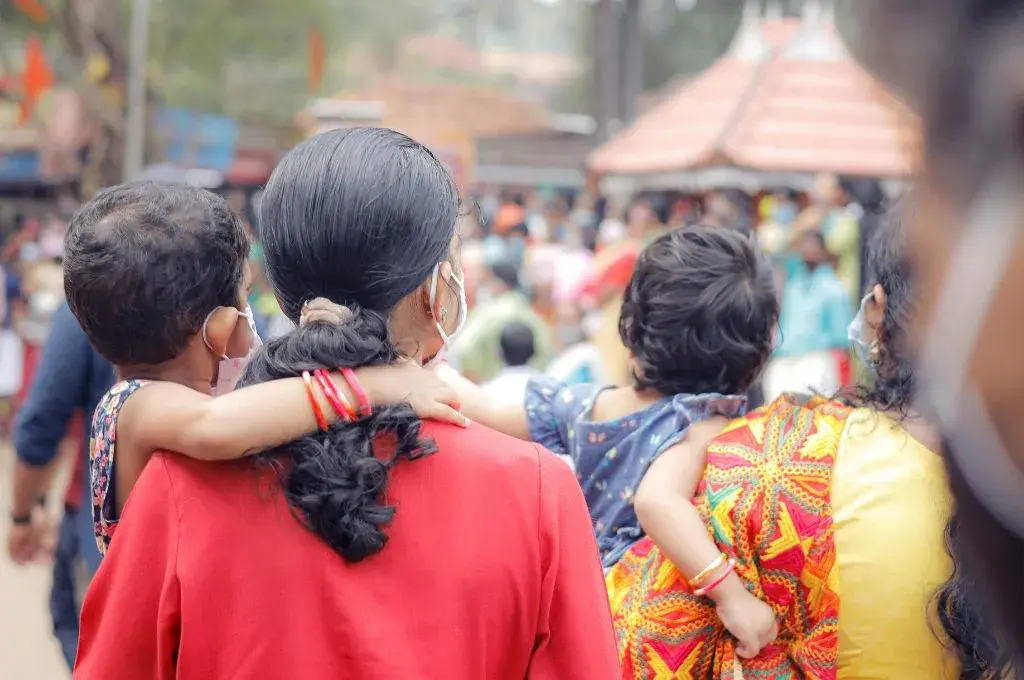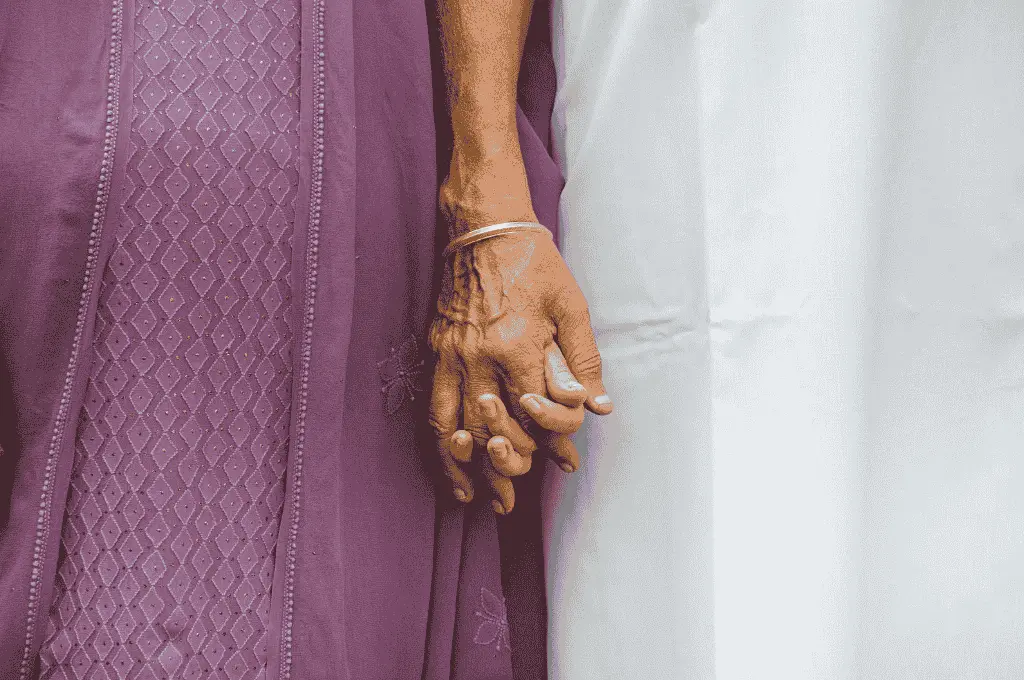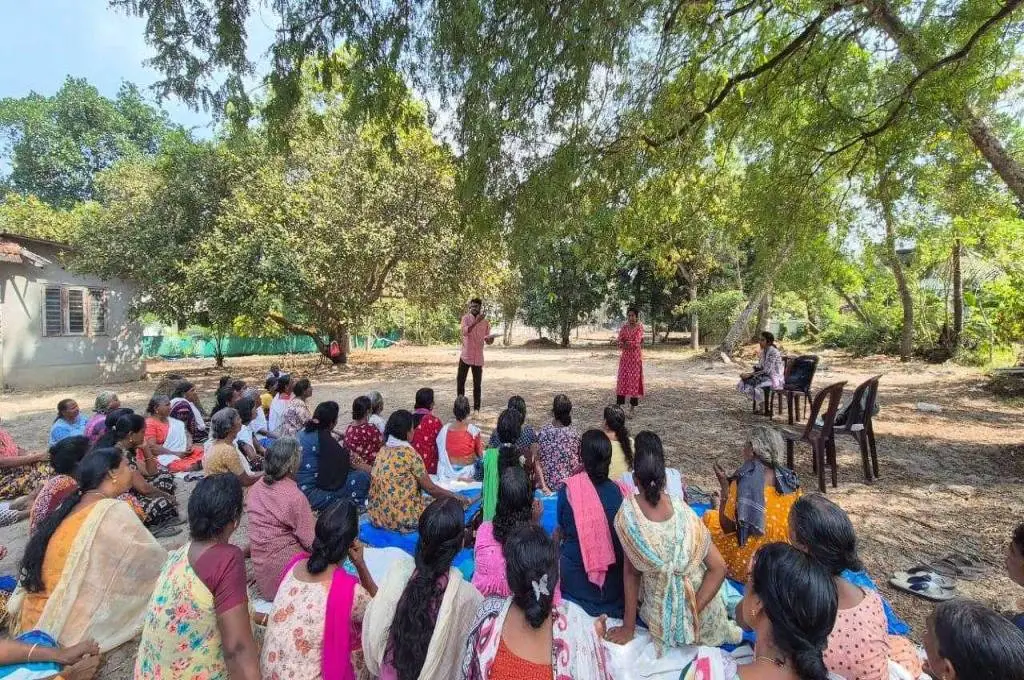Edited transcript of the episode:
0.50
Devanshi: In many parts of the world, conflict is an everyday reality. It shapes institutions, relationships, and how people learn to see themselves and others. But within systems built on violence and mistrust, who gets to define what healing looks like? What does well-being mean when trauma is generational, collective, and often invisible?
In this episode, we’re joined by Paula Moreno and Dr Jean Bosco Niyonzima, two people who’ve spent years working at the intersection of peacebuilding, mental health, and collective action. And two people who were born into countries marked by deep, ongoing conflict.
Paula is the founder and president of Visible Hands, Colombia’s largest leadership network for equity that is working to build new models of leadership focused on racial and territorial justice in the country and beyond. In 2007, she became the first and youngest Afro-Colombian woman to hold a cabinet position in Colombia’s government, where she was appointed minister of culture.
Our second guest, Dr Jean Bosco, is a doctor, social entrepreneur, and expert in trauma healing and community-based mental health. He is also the co-founder of the Ubuntu Center for Peace, a nonprofit in southern Rwanda that works to address individual and collective trauma through community-led healing models.
In this episode, we’re going to be speaking to them about what healing looks like beyond therapy rooms, how culture and community can become emotional infrastructure, and why it’s time for donors and governments to stop imposing solutions and start listening.
Paula, could you take us through what growing up in Colombia during decades of conflict was like, and how it shaped your journey as someone working on peacebuilding?
2:46
Paula: I was born in Colombia, and I have had a career for the last 25 years in development, in cooperation, in philanthropy, and I was the youngest minister in Colombian history. For me, it has been very important to work on building peace because I grew up in a country in conflict. [Ever] since I [can] remember, we have been in a conflict, in an armed conflict, with guerrilla groups particularly, then with the drug cartels, with all that. And I remember my first years just dealing with that, with that political violence, with that criminal violence. I live in Bogota, not in the rural areas of Colombia or cities like Medellin; they also are very complex. [Even] where my family lives on Colombia’s Pacific Coast, it was very complex, because it’s like violence being in your life process, in your life path, in different ways. Even [though] I am a middle-class woman with a family that built many opportunities for me, violence was there in different ways. And Colombia has been [particularly known] in Latin America for that.
Unfortunately, today, it’s generalised, the violence—not just in Colombia, but in Mexico, in Ecuador, in so many Latin American countries, [and] even in the world. And to understand…for me, it’s sad because I know what it takes to dismantle conflict. We are struggling with that even today, even if we have had two peace processes. I mean, most of us have devoted our lives to peacebuilding. It has been a long process to really dismantle violent systems from our country.
4:41
Devanshi: Paula, given everything you’ve shared, what has well-being looked like for you, especially as someone who’s grown up around conflict?
4:48
Paula: I think it’s complex because I recognise that I have a double perspective in this regard because I have been a Black woman from a middle-class family…very exceptional among Black people in Colombia…who had very good opportunities to study abroad, to build my own organisation that I have been running for 15 years, to build a foundation, to be a minister [in the government]. I have had so many opportunities, and of course challenges. Also, since I was very young, I have had too much responsibility. I was a minister when I was 28. And it is complex to respond to that question because, from a personal perspective, I was very unbalanced when I was a minister and even when I started the organisation. And, given that I have always worked internationally [as well as] in the US as a board member of the Ford Foundation and in many bodies, spaces, and agencies in the world, I was not that balanced to [talk or think about my well-being]. But after going through sickness, and having illnesses and being in hospitals, I learned that I needed to take care of myself. But I have the means to do that; I have the economic possibility to do that.
In the case of many Colombians who are dealing with conflict, in proximity, day by day, it is more complicated because even if people face many challenges in their daily lives, they don’t have the economic means to take care of themselves, their self-care, let’s express it that way, to really find different ways to deal with that complexity. And culture became the main tool for many Colombians to deal with that complexity, but for many others who have been victims of conflict, who have been traumatised, and who are still dealing with territorial control by armed groups, well-being sounds like a very abstract concept, which is difficult to exercise when you have the perpetrators of violence next to you.
7:07
Devanshi: Yeah, and when you say culture, what does that mean? What do people turn to, what does that look like?
7:14
Paula: Yeah, I mean, singing, dancing. I always say that Colombia is a country where life and death live in the same space and with the same intensity. We are a very lively country; we are into salsa music, into diverse music. We move ourselves all the time. I always say that we are walking, and we are dancing. And there is a whole sound system and [a] soundtrack in us from the moment we wake up. It’s a country that is always singing, it’s always dancing, and it’s enjoying itself. But at the same time, in parallel, it’s also a violent country where you are dealing with [so] much grieving, where you are dealing with [so] much trauma. But we all live in that contradiction.
And culture becomes a main tool because it’s what communities have. I always remember what the songsters in the Pacific Coast, the area where we work the most, said, “When you are talking about therapy, Paula, why are you talking about [it]? We are the therapist. We sing—when someone dies, we just honour this person, singing. When we have sadness, we just sing. We emotionally help communities to navigate different types of conflict and violence that we face day by day.”
8:42
Devanshi: Paula, for listeners who may not be familiar with the term, could you explain who songsters are?
8:48
Paula: [They are] women who sing in a community, like cultural leaders who sing in a community. They are a group of women who join just to sing traditional music, with traditional instruments that they have built with elements from nature. They just sing together. So, when someone dies, they gather and there are 30, 50 women just singing for this person. Or when someone is sad, they just gather to sing together. That’s the songster movement in Colombia; it’s a very strong movement.
9:24
Devanshi: That’s incredible. And could you also maybe share a story about cultural activism or community activism, or any kind of resilience that has come from culture, rather than, say, therapy or other kinds of well-being that people look to?
9:38
Paula: Sure, I mean in Colombia culture is our emotional infrastructure and we are very emotional. And just to give you an example, our memory houses, that is the houses [that are built by] people who have suffered [during] the conflict, [they] make a…I don’t know how you would say it in English…cemetery? Many people haven’t found the bodies of their loved ones who have been disappeared by criminal groups. So, the bodies are not physically returned after a violent act. And in many of these houses of memory, through culture, through photography, through writing, through everything, it becomes a way to say goodbye to this person who disappeared in a violent way. And people build these houses and there are murals with the pictures of many of the people who have been disappeared in the conflict. And families honour them through writing, through the visual part of their presence in their life.
10:42
Devanshi: Thank you for sharing that, Paula. It really shows how powerful culture and community can be when it comes to healing and holding space for grief and resilience. Dr Bosco, coming to you now, could you also help us understand Rwanda’s context? What have the decades of conflict looked like there, what is the situation today, and how does your work fit into that landscape?
11:05
Jean Bosco: Rwanda is a country with three ethnic groups: Hutu, reportedly majority; Tutsi; and Twa. Historically, we had a kingdom that ended in 1959 [and the early] ‘60s, and then it was predominantly Tutsi. Then there was what was called a social revolution and it transitioned into a republic from the 1960s until now. We had the First Republic, the Second Republic in 1973, and then today [it] is the Third Republic after the genocide. There has been discrimination [and] exclusion—I would say it’s a vicious cycle of discrimination [and] exclusion that culminated into genocide against the Tutsi in 1994. So, you can imagine when you have mass killings and genocide, how people feel. In the aftermath of genocide, we have collective trauma, all sorts of mental health issues, mistrust, chronic fear, victimhood, collective shame, collective angst. There are stereotypes but, in addition to that, you have mental health issues. Over 20 percent of people are suffering from mental health issues, mainly depression, anxiety, and PTSD. But most of it is underlined by trauma.
Now to situate our work, the healthcare system is mainly clinical, so [it is] facility-based, individualised, and medicalised. And, unfortunately, around 49 percent don’t utilise available services. So, we have come in to try to complement existing services to ensure that people feel less stigmatised. And our services are community-based, so that’s the difference. [They are] community-based but we wanted to support and build a system which integrates that community-based [approach] into primary healthcare.
13:46
Devanshi: And when you say community-based, what does that look like? How do communities think about their own mental health or their well-being and how does that shape the work that you do?
13:57
Jean Bosco: Trauma isolates and breaks the sense of worth. So, we can’t heal in isolation. I myself suffered from trauma and, based on my healing story, but also on what I have seen, I’ve understood that healing is relational. It’s community-based, [it’s about] building compassion and courage. It’s driven [by] Ubuntu philosophy: I am because we are. Because trauma isolates people, fragments individuals, and tears apart communities. To heal, it’s better to bring communities together. So, we heal together in communities. The clinical [approach] centres an individual, the mind, the diagnosis, and therapy. So, as I said, our intervention is Ubuntu-driven—healing together. First of all, we have three pillars. We integrate breath–body–mind practices with collective narrative or storytelling. We use a tree of life methodology and cultural rituals. We train trusted local community-healing assistants to facilitate 15-week healing circles, which are safe spaces for shared grief and restoration.
And then participants transition into self-help groups where they form learning circles and solidarity initiatives to sustain their healing. [In] those circles, it’s a safe space where people, a maximum of 20 people, can breathe together, be listened to, be held, to speak and cry together, and then heal together.
Joseph is one of our participants. He’s a 47-year-old father of four and he was imprisoned for 22 years after the 1994 genocide. When he returned home, most of his neighbours had moved away. And though no longer behind bars, he was trapped in an inner prison of shame and isolation. He said, I remember, “I thought I deserved to be brought into the public and shot dead.” But luckily, after 15 weeks in our Ubuntu Healing Circle, Joseph found the courage to seek forgiveness. And for the first time, he said, “I feel free. I feel human again. I can express my emotions without being judged.” So, now he’s rebuilding his family and supporting others.
17:17
Devanshi: Thank you for that. That sounds incredible and similar to what Paula was saying earlier about people singing together, grieving together about the loss of their families and loved ones, and creating spaces to share those feelings.
And this brings me to something both of you have touched on. Often, when people come in from the outside, whether it’s nonprofits, the government, international donors, or the media, they may not fully understand the nature of trauma, or what well-being actually looks like in these contexts. Paula, have you witnessed moments where outside approaches to healing haven’t worked? Or were there moments where you wished things had been done differently?
17:58
Paula: In many ways, for me, well-being has been an opportunity as well because there are so many inequalities that nurture conflict in Colombia. [There are] many young people without purpose, in our case, who get involved in drug-dealing or in guerrilla groups or all that. But there is a lack of opportunity, which we need to provide. Because we cannot just say, you heal. That healing is nurtured with opportunity as well for you to build your life. And sometimes I feel that, for donors, [instead of] understanding a particular conflict like in the case of Colombia, it’s more [about] methodologies, but not a real investment in changing the conditions of life in that particular context.
And just to give you an example, many of the members of guerrilla groups, armed groups in Colombia are very young people who didn’t find opportunities. So, many of the killers are people who didn’t find a job and that was the opportunity to bring some food for their mothers or something. We just had the shooting of a presidential candidate, and the killer was a young guy who was 14 years old. And when they (the authorities) asked, “Why did you do that?”, he said, “I was just looking for some money for my family.” And I feel that, for donors, for the government, for everything, I have always been questioning how we can come first for many of these people who get involved in armed conflict not for philosophical [reasons], but just to get something and get an opportunity through violence.
So, I feel that much of the healing that we also need, the perspective is yes, of course, we need to deal with the trauma with the person, but [to also] connect it to opportunities for building another future that [would] make [it possible for you not to be] a victim for your whole life. [And to] even channel that in a capacity to contribute to the country. For me, that’s key.
20:09
Devanshi: Thanks for that, Paula. And if I had to ask the same question to you, Dr Bosco. If you had to change one thing about how the donors or media or any outside actors who are coming in and having a voice on how well-being is treated in Rwanda, what would that look like?
20.25
Jean Bosco: First of all, I no longer support the idea of external people to come and do healing and peacebuilding in any other communities, because communities know how to heal each other if they are given that opportunity. So, [what] we need is to create that space, that opportunity, so that they can claim their dignity. And if donors or any other supporter can support them in that process, that would be wonderful. Because we have seen that, for instance, in the funding community, Westerners fund Westerners. [For] Africans or Asians, the funding is less than 5 percent as compared to what they do [to] fund Westerners.
Unfortunately, those Westerners who come to work in our settings come with the wrong solutions. Now, if they can do what they call localisation, which I really don’t know what it means, [but] for me, they could [provide] support like the Segal Family Foundation. This is one of the foundations that I really admire because they also support us. It’s US-based. They support local entrepreneurship, local entrepreneurs, social entrepreneurs. They give them the voice and the power, some catalytic funding—for a long time unrestricted—so that they can support their communities and support them as they rebuild or claim their dignity and empower them so that they can heal as a people.
Whatever you do, if you come as a journalist or you come as a donor, try to support what is there [and is] working, and not bring or impose your own way of doing things.
22:40
Paula: And also, what you’re saying I feel is so effective because to my understanding, it is about giving the agency. You know, people have agency. People have been dealing with a very complex situation. They are the key part for that and supporting the local people is key, and building that agency, because sometimes you take away agency from people.
23:03
Jean: Exactly.
23:04
Devanshi: Yes, absolutely. One of the things we talk about a lot in our work at IDR is exactly this—that communities know what they need. People know how they want to heal. Sometimes, all we need to do is listen and give them what they’re asking for and facilitate the process. So, thank you both so much for sharing that.
Can I ask you both one more question? If there was one idea or one practice from your work that you would like more people to know about, to learn from, what would that be? Paula, maybe we can start with you?
23:38
Paula: For me, I have devoted the last 15 years of my life to a network of leaders who are trying to change the landscape in Colombia…not just the landscape, but the reality in Colombia—diverse leaders. And I feel that we need to invest a lot in the kind of leaders that we need in our countries.
Even thinking [about it] in an intergenerational way, what are the leaders that our country needs for systemic change, for system change? Because I feel, for the future, that will be key. And how we bring this history, this sensitivity, this level of compassion, empathy for people who can really make decisions and build power…I think, for me, that’s something that I have devoted 15 years of my life to, and I’m seeing this generation emerging, and I’m very hopeful about the future because of that.
24:35
Jean Bosco: So, two or three things. First of all, in our case, for instance, we have a model that works. We have completed a randomised control trial, and we have seen that combining breath–body–mind practices, collective storytelling, and rituals in the community, using laypeople, trained and supported, it works. When people heal in groups, it works. But the second thing, as she says, it’s important to prioritise young people because they are the new generation, and there is a lot of intergenerational trauma. So, they are the ones who can break that cycle.
The third thing, in terms of systems change, we need to make it simple. A scalable, accessible model that can be embedded through the government, or maybe thinking in terms of movement-building. But systems change is important because just intervening in a small community and thinking that we are solving issues—that would not work.
—
Read more:
- Living through the unimaginable: A testament from Gaza
- Beyond conflict: Intergenerational trauma and resilience in Kashmir
- Repertoires of healing and dissent
- The port of evidence: Reconstructing the missing black box of the Rwandan genocide
- Collective healing and trauma-informed approaches for the mental health of survivors of trafficking
- Addressing inequalities: Structural competency and collective action in mental health
- The shape of safety
